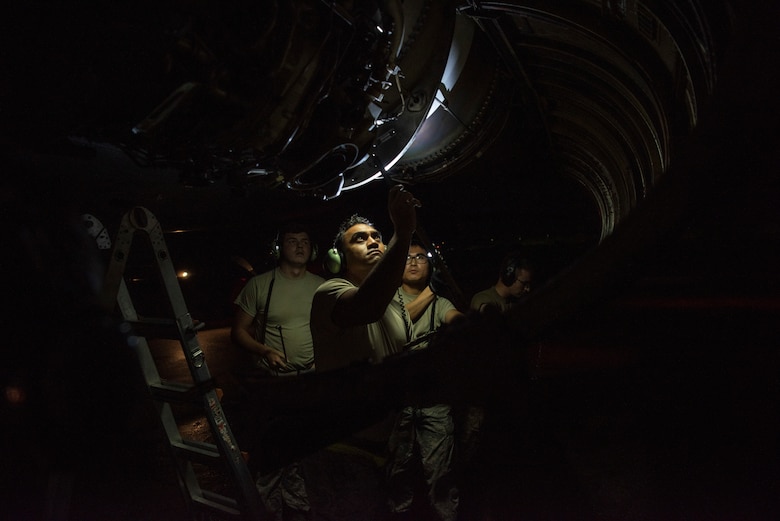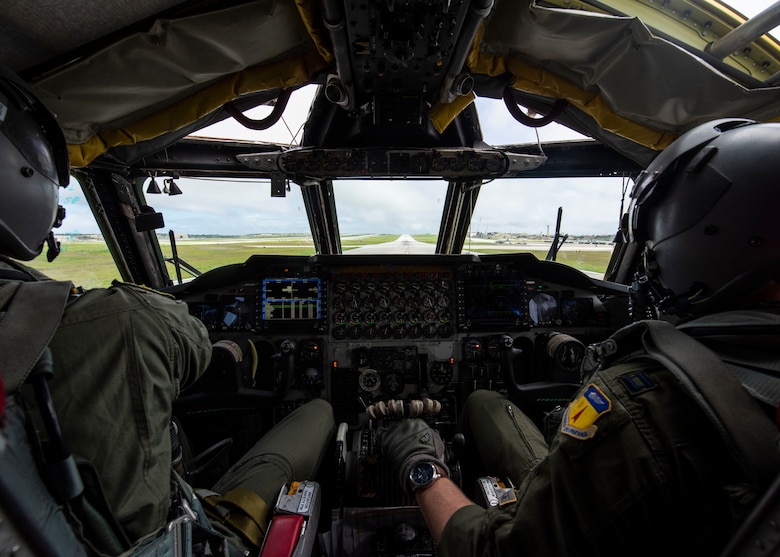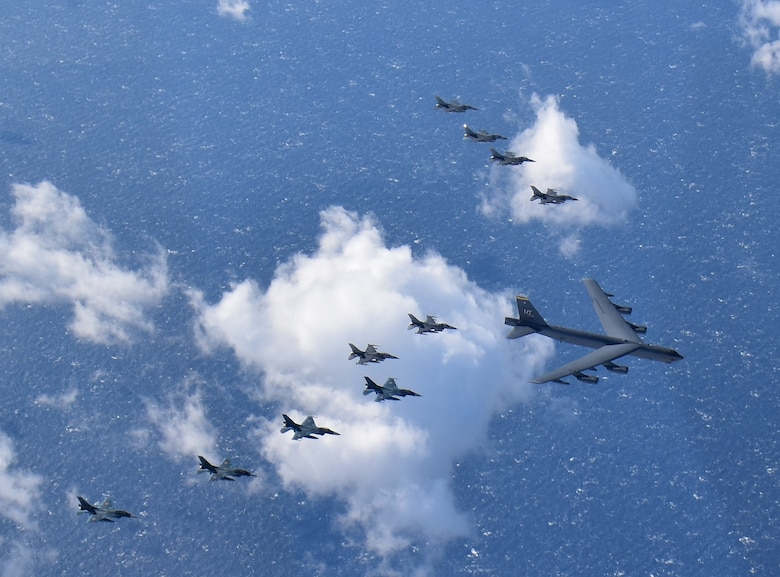U.S. Air Force aircraft from the Pacific theater and the continental United States integrated with the Koku Jieitai (Japan Air Self Defense Force or JASDF) to conduct bilateral and theater familiarization training near Japan, Feb. 3.
A U.S. Air Force B-52H Stratofortress bomber from Andersen Air Force Base, Guam, flew north to join a B-52H Stratofortress from Minot AFB, North Dakota, in the vicinity of Misawa Air Base, Japan, as part of a combined Continuous Bomber Presence and Bomber Task Force mission.
The two bombers subsequently conducted bilateral joint training with 13 JASDF F-2s, four F-4s, 28 F-15s, and six U.S. Air Force F-16 Fighting Falcons assigned to Misawa Air Base's 35th Fighter Wing, in the vicinity of Japan before returning to Andersen AFB.
Collectively, the flights from the Indo-Pacific and continental United States demonstrate U.S. commitment to allies and partners through the global employment of military forces.
"For more than 60 years, the U.S.-Japan alliance has been the cornerstone of stability and security in the region. The integration of bomber aircraft operations in the Indo-Pacific, alongside our Koku Jieitai partners, provides a significant opportunity to enhance our combined readiness, promote interoperability, demonstrate our global power projection and provide transparency across the region," said Gen. CQ Brown, Jr., Pacific Air Forces commander. "This mission fully demonstrates our enduring commitment to a free and open Indo-Pacific and our willingness to defend our interests and the freedoms enshrined in international law."
U.S. Strategic Command's bomber forces regularly conduct combined theater security cooperation engagements with allies and partners, demonstrating U.S. capability to command, control and conduct bomber missions around the world.
"This mission demonstrates the flexibility, long reach and responsive nature of our bomber force as we continue to assure our allies and deter aggressors globally," said Maj. Gen. James Dawkins, Jr., Eighth Air Force and Joint-Global Strike Operations Center commander. "Joint and multinational integration provides an excellent opportunity for our Airmen to maintain their readiness and hone their global strike capability."
The bombers from Guam are assigned to the 69th Expeditionary Bomb Squadron out of Minot AFB, North Dakota, deployed in support of U.S. Indo-Pacific Command's CBP operations. Pacific Air Force's have flown CBP operations for more than 15 years in support of a free and open Indo-Pacific. These missions routinely operate throughout the region in accordance with international law and norms.
U.S. Strategic Command has conducted bomber task force missions since 2014 as a demonstration of the U.S. commitment to collective security, and to integrate with geographic combatant command operations. The first mission included B-52Hs and B-2 Spirits traveling from the continental U.S. to Joint Base Pearl Harbor-Hickam in April 2014.
Strategic bomber missions enhance the readiness and training necessary to respond to any potential crisis or challenge across the globe.

Airmen assigned to the 69th Aircraft Maintenance Squadron inspect a B-52H Stratofortress engine before a flight at Andersen Air Force Base, Guam, Feb. 3, 2020. Strategic bomber missions enhance the readiness and training necessary to respond to any potential crisis or challenge across the globe. (U.S. Air Force photo by Airman 1st Class Michael S. Murphy)

A B-52H Stratofortress, assigned to the 69th Expeditionary Bomb Squadron, deployed from Minot Air Force Base, N.D., receives fuel from a KC-135 Stratotanker assigned to the 191st Air Refuelling Squadron, Wright Air National Guard, Utah, after taking off from Andersen Air Force Base, Guam, Feb. 3, 2020. Continuous Bomber Presence deployments provide opportunities to advance and strengthen alliances, as well as strengthen long-standing military-to-military partnerships. (U.S. Air Force photo Airman 1st Class Helena Owens)

Capt. Wesley Fite, a 5th Operation Support Squadron pilot attached to the 69th Expeditionary Bomb Squadron, deployed from Minot Air Force Base, N.D., and Capt. Patrick Mason, a pilot with the 69th Expeditionary Bomb Squadron, prepare for takeoff in a B-52H Stratofortress at Andersen Air Force Base, Guam, Feb. 3, 2020. U.S. Strategic Command has conducted bomber task force missions since 2014 as a demonstration of the U.S. commitment to collective security, and to integrate with geographic combatant command operations. (U.S. Air Force photo by Senior Airman Zachary Neal)

A U.S. Air Force B-52H Stratofortress from Minot Air Force Base, N.D., six F-16 Fighting Falcons and four Japan Air Self-Defense Force F-2s from Misawa Air Base, Japan, fly in formation off the coast of northern Japan as part of a combined Continuous Bomber Presence and Bomber Task Force mission, Feb. 3, 2020. U.S. Strategic Command's bomber forces regularly conduct combined theater security cooperation engagements with allies and partners, demonstrating U.S. capability to command, control and conduct bomber missions around the world. (Japan Air Self-Defense Force courtesy photo)






